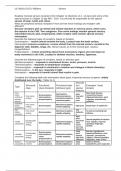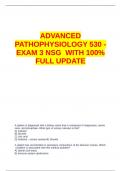UCI BioSci D170, Williams Senses
Reading: General sensory receptors from Chapter 14 (Sections 14.1, 14.2a,b) and some of the
special senses in Chapter 16 (pp 488 – 503). You will only be responsible for the special
senses of taste, smell, and vision.
What are peripheral sensory receptors? How are free nerve endings and receptor cells
different?
Sensory receptors pick up stimuli and initiate impulses in sensory axons, which carry
the impulse to the CNS. Two categories: Free nerve endings monitor general sensory
information (touch, pain, temperature), while receptor cells monitor special sensory
information.
Describe the following types of receptors, based on location:
Exteroceptors – receive stimuli outside the body. Located near the body surface.
Interoceptors (viscero-receptors)– receive stimuli from the internal viscera. Located in the
digestive tube, bladder, lungs, etc. Stimuli causes us to feel visceral pain, nausea,
hunger/fullness.
Proprioceptors – receive stretching stimuli from locomotory organs and send input on
body movement to the CNS. Located in skeletal muscles, tendons, ligaments.
Describe the following types of receptors, based on stimulus type:
Mechanoreceptors – responds to mechanical forces: touch, pressure, stretch.
Thermoreceptors – responds to temperature changes.
Chemoreceptors – responds to chemicals in solution and changes in blood chemistry.
Photoreceptors – in the eye; responds to light.
Nociceptors – responds to harmful stimuli that results in pain.
Complete the following table with information about types of general sensory receptors, widely
distributed over the body. (Table 14.1)
Descript
Structural Functional Functional class ion / Examples / body
Type
class class (location) (stimulus type) special location
features
Free Most body tissues:
Nociceptors, pain,
nerve Exteroceptors, connective tissues
Free nerve thermoreceptors, heat and
ending of interoceptors, (ligaments/tendons, joint
ending mechanoreceptors, cold,
sensory proprioceptors capsules, periosteum),
chemoreceptors pres
neuron epithelia
Epithelial
Free nerve Mechanoreceptors,
tactile Exteroceptors light pres Basal layer of epidermis
ending slowly adapting
complexes
Hair hair
Free nerve Mechanoreceptors, In and surrounding hair
follicle Exteroceptors deflectio
ending rapidly adapting follicles
receptors n
light
pres,
Dermal papillae of hairless
Encapsulate discrimin
Tactile Mechanoreceptors, skin: nipples, external
d nerve Exteroceptors ative
corpuscles rapidly adapting genitalia, fingertips,
ending touch,
eyelids
low freq
vibration
deep Dermis, hypodermis,
Exteroceptors,
Encapsulate pres, ligaments/tendons, joint
Lamellar interoceptors, Mechanoreceptors,
d nerve stretch, capsules, periosteum,
corpuscles some rapidly adapting
ending high freq nipples, external genitalia,
proprioceptors
vibration fingertips, soles of feet
Bulbous Encapsulate Exteroceptors, Mechanoreceptors, deep Deep in dermis,
corpuscles d nerve proprioceptors slowly adapting or pres, hypodermis, joint capsules
, UCI BioSci D170, Williams Senses
ending non-adapting stretch
*Proprioceptors only*
Encapsulate
Muscle Proprioceptors muscle
d nerve Mechanoreceptors Skeletal muscles
spindles stretch
ending
Encapsulate
Tendon Proprioceptors tendon
d nerve Mechanoreceptors Tendons
organs stretch
ending
Joint Encapsulate
Proprioceptors Mechanoreceptors Joint capsules (synovial
kinesthetic d nerve n/a
, nocireceptors joints)
receptors ending
Jump to Chapter 16:
What functional type of receptors are for taste and smell? What division of the nervous system
do taste and smell belong to?
Taste and smell receptors are chemoreceptors: food chemicals dissolved in saliva and
airborne chemicals dissolved in nasal membrane fluids. Taste and smell belong to the
visceral sensory nervous system.
Describe the location, structure, and function of taste buds, noting the following structures:
(places where taste buds occur)
Papillae – peglike projections of the tongue mucosa. Covered by epithelium, which
contains taste buds.
Fungiform papillae – small papillae that cover the entire surface of the tongue. Their apical
surface contains taste buds.
Vallate papillae – large papillae arranged in an inverted V near back of the tongue. Side
walls contain taste buds.
Foliate papillae – ridgelike papillae on the posterolateral surface of the tongue. Side walls
contain taste buds.
Gustatory epithelial cells – one cell type in a taste bud. Once induced by gustatory hair, they
generate impulses to their sensory nerve fibers.





